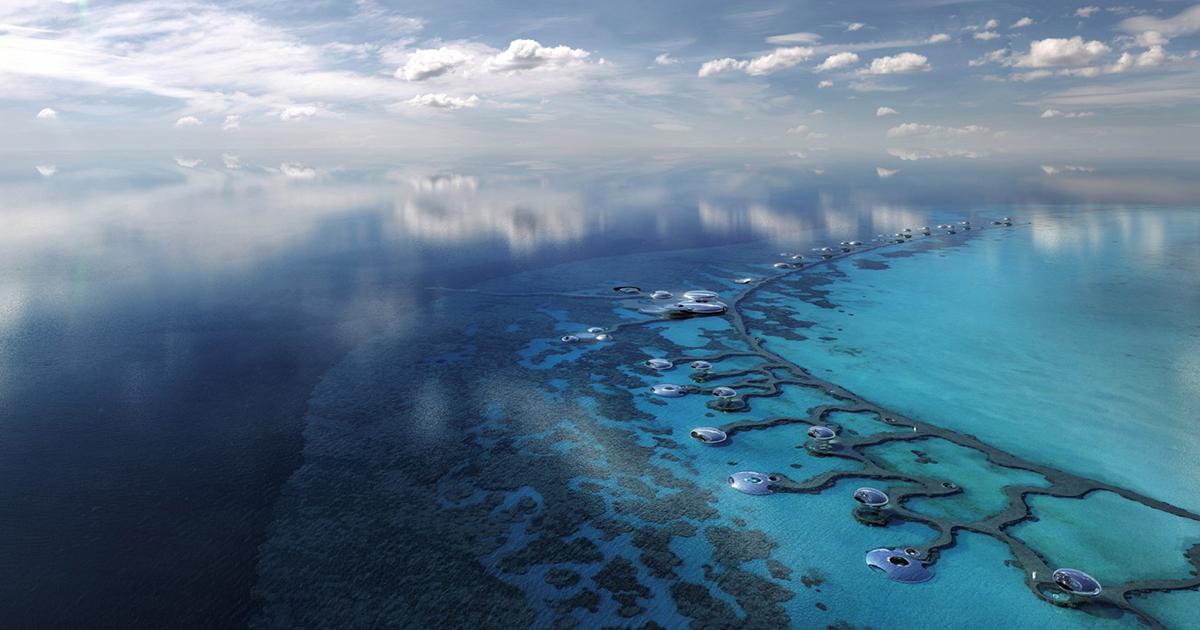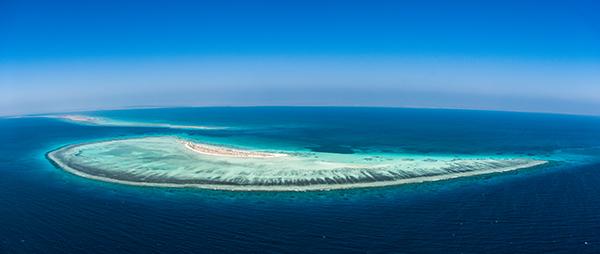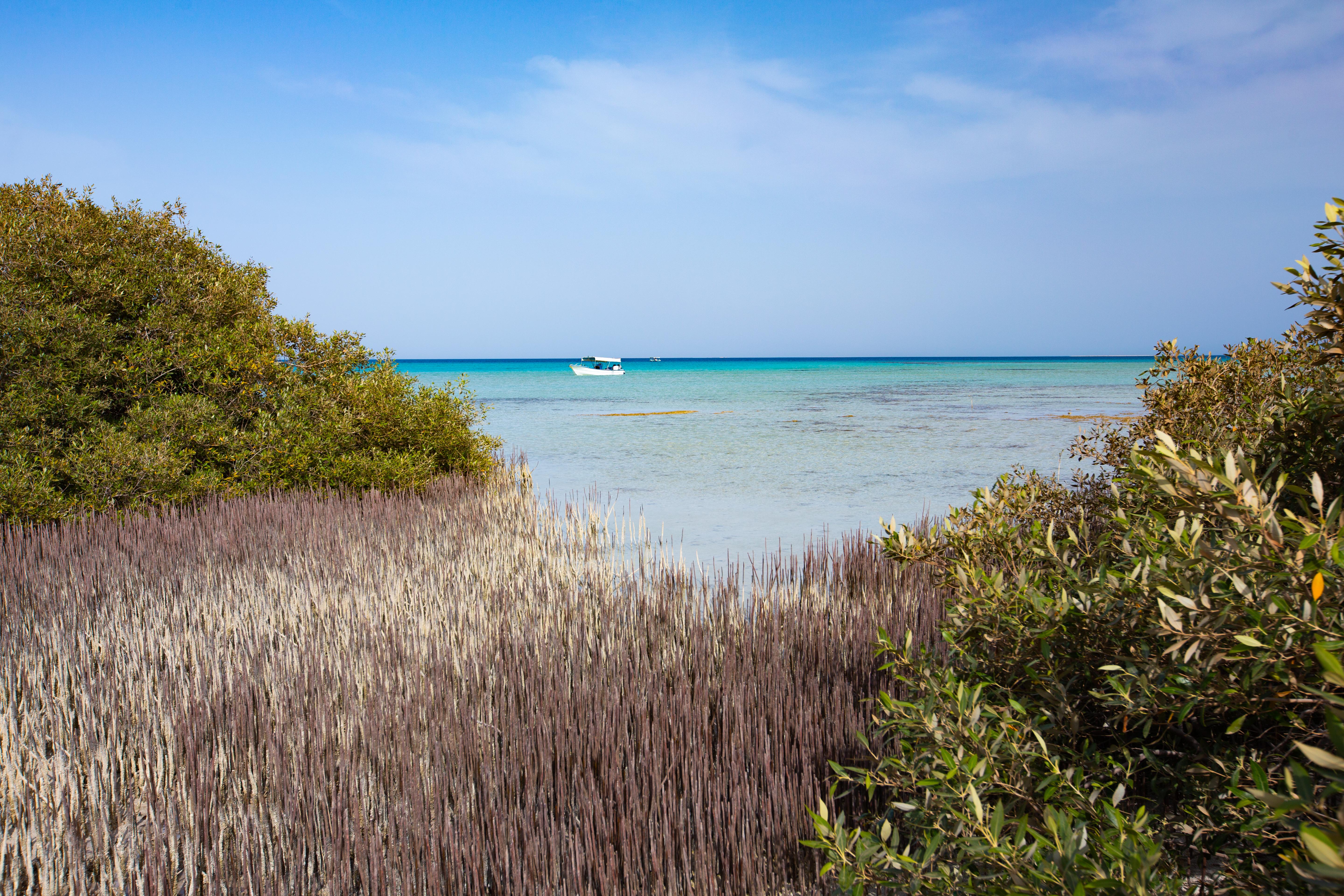
The Red Sea Development Company (TRSDC) and King Abdullah University of Science and Technology (KAUST) have developed a ground-breaking application of conservation and development planning to enhance biodiversity and conservation-priority species distributions across almost 1,300 square kilometers of pristine lagoon, pioneering a new relationship between natural resource conservation and the development of a luxury tourism destination.
The Marine Spatial Planning process coordinates multiple uses of the marine environment - energy and utilities, recreation, conservation, transportation and shipping, aquaculture and others - and carefully manages the way these interact with vulnerable species and habitats to optimize goals of both conservation and development. To inform the process, KAUST brought biologists, ecologists, oceanographers and modellers together with TRSDC’s architects, engineers and master planners, to collaborate on this large-scale project planned to achieve net conservation benefits in the presence of carefully planned development.

“We will not compromise the standards that we have set for ourselves as we deliver this incredible project. We believe that this commitment matches the desires of our potential customers in the luxury travel market,” said John Pagano, CEO of TRSDC. “Today’s luxury traveller wants to enhance, not exploit, the natural environment. Together we can preserve and enhance this unique treasure for future generations, and share the lessons we learn here with the world.”
Developed by KAUST scientists, the planning process applies dedicated software to generate an in-depth picture of a large marine area, allowing for an unprecedented level of insight into the potential environmental impacts of development and the opportunities to optimize conservation benefits. This will help ensure that a network of protected sites within the Al Wajh lagoon, which supports a variety of endangered species, will be unharmed – and actively enhanced – by the development.
Once collected and analysed, the data obtained was key to informing TRSDC’s design to meet goals of both conservation and development, ensuring marine and coastal habitats remain healthy and biodiversity is conserved while supporting sustainable development of luxury tourism.
The Concept Master Plan for the luxury destination will now deliver a net positive conservation benefit of up to 30% within the next two decades.
“The ecosystems of the Red Sea are some of the most resilient on the planet, remaining pristine and unaffected by global warming, and providing hope for threatened reefs elsewhere,” said Professor Carlos M. Duarte, Tarek Ahmed Juffali Research Chair in Red Sea Ecology at KAUST. “I have no doubt that the lessons we learn from the application of technology to sustainable development here will be used in the future to benefit fragile ecosystems around the world and show that the trade-off between development and conservation is a false dichotomy.”
The Red Sea Project, one of The Kingdom of Saudi Arabia’s Vision 2030’s giga-project development initiatives, will deliver a unique luxury tourism experience of unparalleled diversity, while enhancing the destination's extraordinary natural wonders. The Project will be created around several unique and diverse treasures: an archipelago of more than 90 islands surrounded by thriving coral reefs; dramatic desert canyons and dormant volcanoes; and heritage sites.

TRSDC, the master developer of the project, has committed to putting sustainability at the heart of every decision it makes and to set new standards in sustainable development. The company has already undertaken more than 30 ecological studies throughout the design and development phase to ensure all plans actively enhance the local environment. The partnership with KAUST, the world’s foremost authority on Red Sea ecosystems, has been established from the early days of the project to help TRSDC deliver against this ambition.
TRSDC also aspires to implement a range of policies including zero waste-to-landfill, zero discharge-to-sea and a total ban on single use plastics. The destination is master-planned to rely 100 percent on renewable energy and to be completely carbon-neutral once operations commence. Landscaping projects will emphasize natural flora adapted to the climate and local environment, such as mangroves which grow in sea water, as well as methods to enhance water reuse while minimising desalination and brine discharge.
According to WWF Global, coral reefs are home to 25% of all marine life and form the nurseries for about a quarter of the ocean's fish; yet approximately one-quarter of coral reefs worldwide are already considered damaged beyond repair, with another two-thirds under serious threat. Consequently, the investment planned by TRSDC into current and future protection of coral reefs is crucial.
“Our commitment is clear,” said John Pagano. “We will partner with the best local and global organisations to ensure our development is guided by credible research and environmental institutions, allowing us to deliver an unparalleled luxury experience without compromising the natural environment. That’s why we are proud to work with the King Abdullah University of Science and Technology to not only protect, but also enhance this precious ecosystem.”